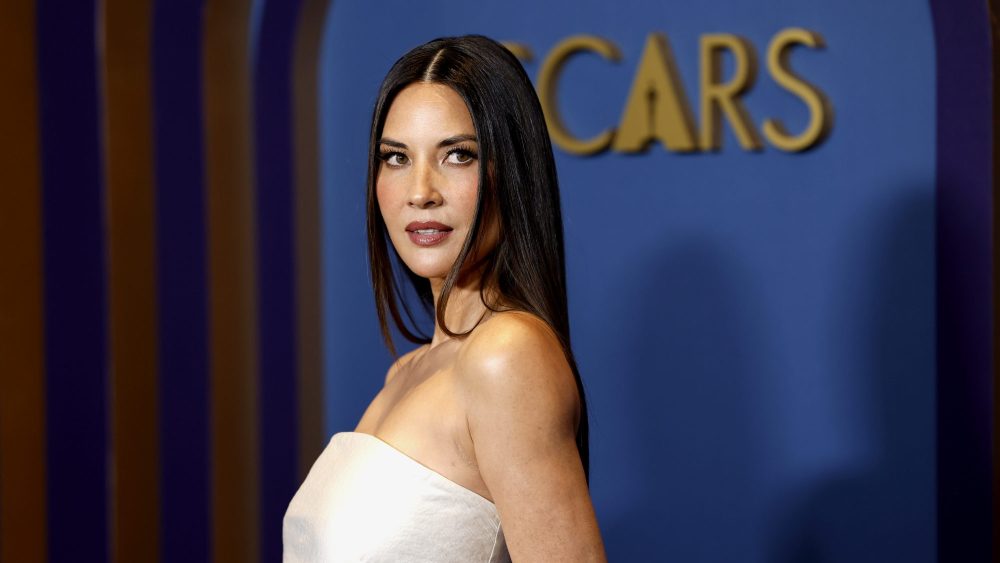Joseph L. starring Bette Davis and Anne Baxter.
Molly Smith Metzler, the creator of Netflix's “Sirens”, is a mysterious philanthropist called Moore and is known as “fans” of the movie. The truth is that the basic foundation of 1950 was incorporated into the production of “Sirens” because director Nicole Kassell often quoted the film. Metzler said: “I think she and the fakes are talking about its size and looking at it.
The creative group behind the “Sirens” joins choose To screen “About Eve” to debate the basics and their relevance to their collections, three ladies are involved in the evolving energy dynamics.
Metzler appears with writer and government producer Colin McKenna, photographer Greg Middleton and editor Catherine Haight begin choose 120 screening collections from Barco, a summer show hosted and celebrated by Jazz Tangcay chooseBy showing the iconic film one hundred and twenty years.
“Sirens” follows Devon (Meghann Fahy), a woman from Buffalo, NY, who is the main caregiver of her father and attempts to convince her sister Simone (Milly Alcock) to help her, seeking only Simone to live on the secret island property of Michaela, the character of Moore. Apart from Michaela and Davis’ Margo, the creatives compare Simone and Baxter’s eve.
Metzler confirmed that “everything about Eve” “had an unconscious effect on this inventive group.” However, one difference in “Sirens” is not to completely completely make Simone. Metzler mentioned: “I believe the current request you are sure whether she is a monster.”
“[Eve is] A traditional villain, I believe Simone has a component, but we try to have an extra sense of pleasure. ” she added.
Simone's way of showing himself and the eve still has the opposite. “We found Eve was full of attitude towards her backstory and obscured a darker, sadder story. In Simone, she was very determined to be someone from the past, but it was certainly a very unhappy one. [story]which is actually a bit of a reversal,” McKenna mentioned. She is trying to cover up the dark trigger she doesn’t want to discuss, and I believe Eve is manipulating her background to put her feet in the doorway.”
Middleton mentioned that the viewing expertise of “Sirens” was completely different from the results of “About Eve” because it created additional sympathy for the central character. “A huge difference between this movie and the movie tonight is that you really feel one thing about Simone. I guess I really don't feel a little bit about Eve. I used to be like, 'Twist, Eve.' I'm suggesting Eve, it's demonic, but Simone is a damaged person.
These creatives were also asked to provide female gaze on how the “sirens” were used to provide female gaze on the ladies of three, which was visionary with the male gaze of “all about Eve”.
“We created this too many close-ups to make the audience feel Mikayla hypnotized. But in the movie, once we first meet Eve, she looks like a robot. she It seems to be hypnotized. So the point of view means the opposite…and we will never be invested in her point of view, so we will not experience the world as she does. ” Metzler mentioned.
She also talks about how the “sirens” are expressed with Greek mythology, and the idea of siren, who seduces men through their voices and kills them only. “All of this is from Homer's point of view, or from the sailor's point of view. We really don't know the ladies are singing or who they are,” Metzler said. “I don't know the 'Sirens' explains now, but our active attempts to lighten it. Like, this myth is wrong, we shouldn't hear the story and assume they are monsters.”
“Why abandon our problem and blame it on the attractive ladies so pure and straightforward?” Metzler added.
Haight talks about the tone similarities between “All All All Ever” and “Sirens” that balance drama, humor and irony. Haight mentioned: “Once we started getting the footage of the publication, it was obvious to me, although it wasn't common, and…thinking a comp is very exhausting. But the IS of this movie is definitely humorous.”

